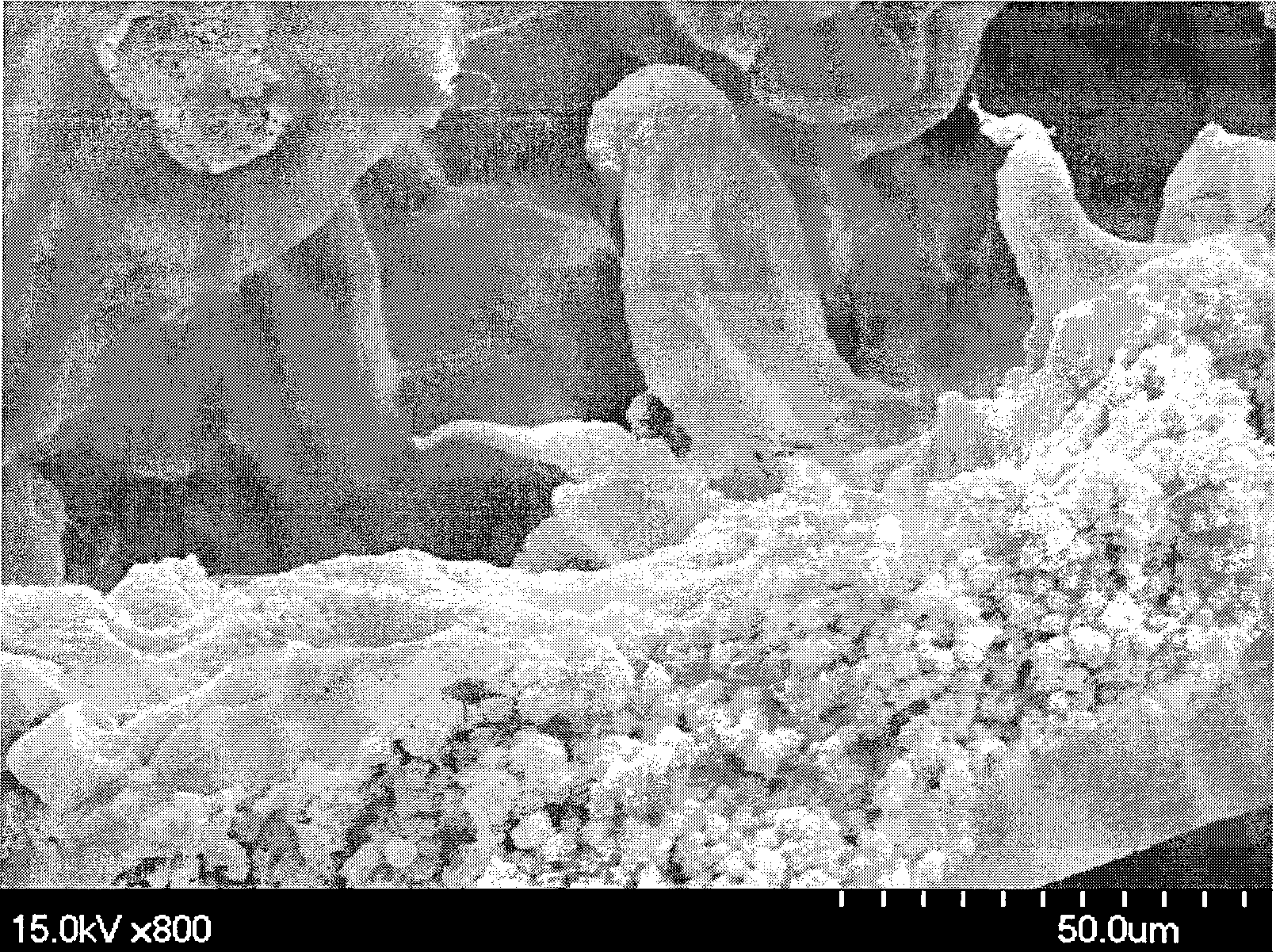Composite film for film bioreactor and method for preparing same
A membrane bioreactor and composite membrane technology, applied in biochemical equipment and methods, methods of sampling biological materials, methods of supporting/fixing microorganisms, etc. Stable structural shape, not easy to fall off and damage, good mechanical stability, etc.
- Summary
- Abstract
- Description
- Claims
- Application Information
AI Technical Summary
Problems solved by technology
Method used
Image
Examples
Embodiment 1
[0024] (1) Preparation of rigid porous material support layer: put 32g of polyethylene into a mold coated with silicone oil release agent, the size of the mold is 10cm×10cm×0.45cm, put it into a sintering furnace for sintering. After sintering, the mold was not taken out and cooled. Open the mold and take out the product.
[0025] (2) Preparation of film-making solution: put 152g of N'N-dimethylacetamide (DMAc) in a 250mL three-necked flask, add 40g of polyvinylidene fluoride and 8g of polyvinylpyrrolidone, heat and stir at 60°C to dissolve, and configure 20wt % (mass content of polyvinylidene fluoride), sealed and allowed to stand overnight for degassing to obtain a film-forming solution.
[0026] (3) Scrape a film on the rigid porous material support layer with a film scraper. The temperature of the film-making room is 25°C, and the relative humidity is 64%. After standing in the air for 3 minutes, the rigid porous material support layer after scraping the film is placed o...
Embodiment 2
[0029] According to the same method as in Example 1, a composite membrane suitable for membrane bioreactors is prepared, except that 17wt% polyvinylidene fluoride is used as a film-making solution instead of 20wt% polyvinylidene fluoride film-making solution, and the quality of the additive polyvinyl alcohol is polyvinylidene fluoride 10wt% of vinyl fluoride mass.
Embodiment 3
[0031] Composite membranes suitable for membrane bioreactors were prepared in the same manner as in Example 1, except that polyethylene and polypropylene were blended at a mass ratio of 80:20 instead of polyethylene as the polymer material, and the sintering temperature was set at 220°C.
PUM
| Property | Measurement | Unit |
|---|---|---|
| Thickness | aaaaa | aaaaa |
| Aperture | aaaaa | aaaaa |
| Aperture | aaaaa | aaaaa |
Abstract
Description
Claims
Application Information
 Login to View More
Login to View More - R&D
- Intellectual Property
- Life Sciences
- Materials
- Tech Scout
- Unparalleled Data Quality
- Higher Quality Content
- 60% Fewer Hallucinations
Browse by: Latest US Patents, China's latest patents, Technical Efficacy Thesaurus, Application Domain, Technology Topic, Popular Technical Reports.
© 2025 PatSnap. All rights reserved.Legal|Privacy policy|Modern Slavery Act Transparency Statement|Sitemap|About US| Contact US: help@patsnap.com



